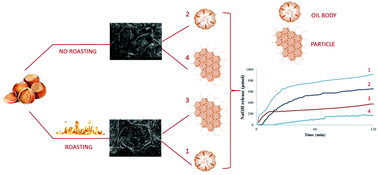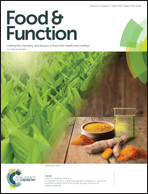In vitro lipid digestion in raw and roasted hazelnut particles and oil bodies
Abstract
Previous studies have proved that the physical encapsulation of nutrients by the cell walls of plant foods modulates macronutrient bioaccessibility during human digestion. In this study, we investigated structural factors that modulate lipid hydrolysis during in vitro digestion of raw and roasted hazelnut particles and isolated oil bodies. Isolated oil bodies exhibited a significantly higher lipid hydrolysis compared to hazelnut particles. Moreover, roasting had an impact on the structure of hazelnut cell walls implying a more efficient diffusion of digestive fluids and enzymes into the hazelnut cells. Heat treatment also caused destabilization of oil body interfacial protein membranes, facilitating their proteolysis under gastric conditions, altering the emulsion properties and enhancing fatty acid release during intestinal digestion. This study underlined the barrier role played by the plant cell wall as well as the impact of heat processing on lipid bioaccessibility in hazelnuts.

- This article is part of the themed collection: Around the Supermarket: Staple Foods


 Please wait while we load your content...
Please wait while we load your content...